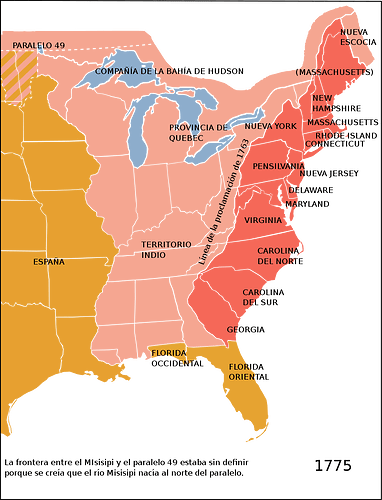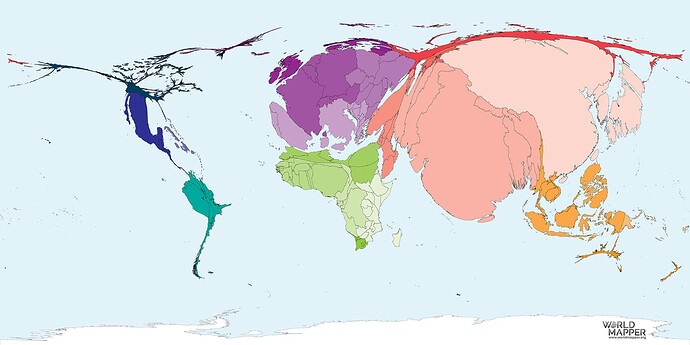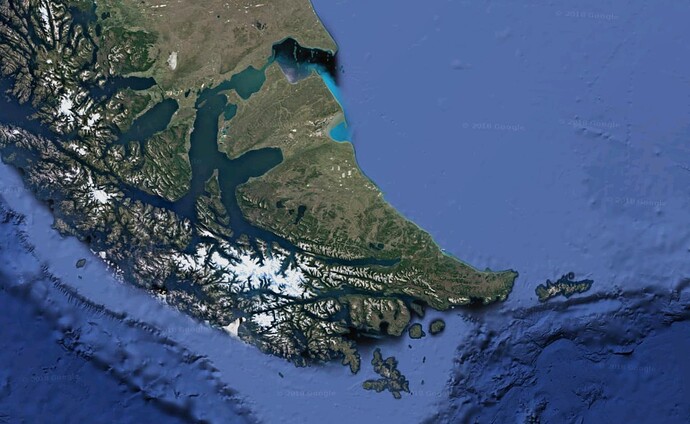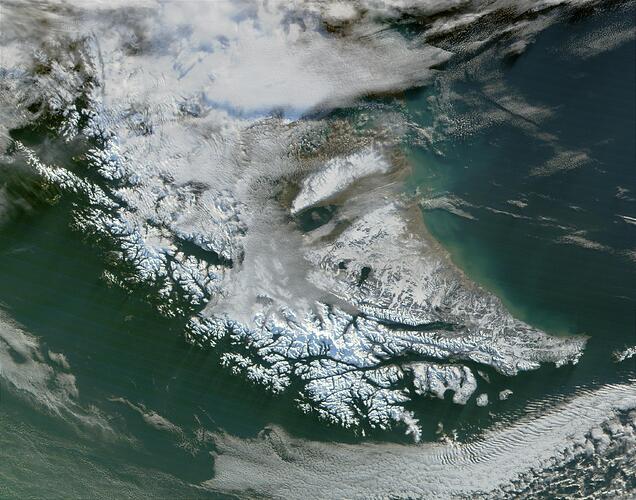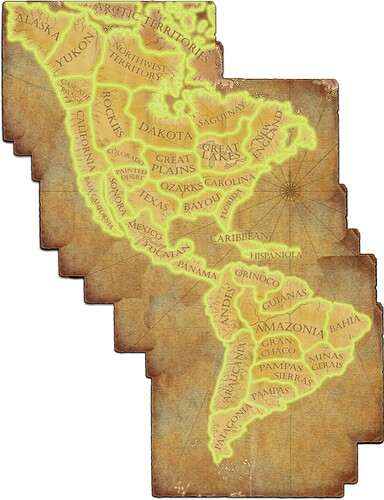Yes, but Vuelta de Obligado is more iconic… It was also a strategic victory for Argentina… Historically, the Argentine federalists and nationalists have considered the fight of the Vuelta de Obligado as the most important triumph in the struggle to consolidate and enforce the sovereignty of the new republics, especially the Argentine Republic.Numerous women participated in the battle of the Vuelta de Obligado who, as nurses, assistants to the artillerymen or companions of the combatants, put their lives at risk before the aggressor powers. Among the patriots, a group of ladies from San Nicolás and San Pedro stood out who supplied the combatants with projectiles and helped the wounded. Josefa Ruiz Moreno, Rudecinda Porcel, María Ruiz Moreno, Carolina Suárez, Francisca Nabarro and Faustina Pereira responded to Petrona Simonino, according to the war report, heroic women that the historical account failed to recognize fairly.
Propongo algo más ambicioso. Campañas de la independencia para Colombia, Argentina y Chile, incluyendo la expedición libertadora a Perú
Está dificil eso…ya sabes como son los yankees…te meterán su campaña de la independencia hasta en la sopa,pero del resto de campañas de independencia latinoamericanas…no,no eso no…a nadie le importa esos panchitos…xd
Es mejor batallas históricas antes que campañas. Probablemente 3 escenarios.
Concuerdo, creo que hablo por todos cuando digo que ya nos cansamos de batallas históricas donde US es protagonista. Batallas con paises sudamericanos de protagonistas seria un nuevo aire imo.
Hello, first of all I thank you for your comment, I like people whose opinion is different from mine.
Now let’s go by part: the 13 colonies when they became independent were only the east coast of North America, so it is understandable that they had a much lower population than the Spanish viceroyalties and Portuguese colonies (not counting the Native Americans who also lived in their territories and slaves).
Absolutely right, but keep in mind that the demographic and territorial expansion of the USA was after its independence (curiously, the same year that the Viceroyalty of the Río de la Plata was created).
Do you have the data of how many Native Americans existed in the territories that the USA annexed? And just to be clear: I don’t want to create controversy, I’m only interested in knowing that information since I suppose you won’t have so many problems finding bibliographical references in your language.
Spain?
Ah! you mean the Spanish colonists who traveled to the new world to look for better opportunities (as is the case with my ancestors). I will mention some key points:
- From what I understand, in all nations with “advanced social structure” there are different social strata, it is evident that each “noble” person is willing to treat their subjects as best suits them as long as they are within the framework of the Law. For example: in the 16th century the Spanish monarchy issued the “Indian Laws” in which the objective was to give rights to indigenous peoples and outlaw abuses, these laws were controversial for some Spaniards and there were even groups of Spaniards who started r e b e l l i o n s (I tried to put a link but they censored it, search for “GRAN R E B E L I ON DE ENCOMENDEROS” in google) so the Spanish Empire had to send troops to America to help the viceroyalty’s armies put down this rebellion (spending resources to send troops to the new world, should not have been cheap). We must also give importance to priests like Bartolomé de las Casas for his great work in issuing these laws.
- In the viceroyalties there were different social classes, even the Inca nobility still existed during the viceroyalty (and ended when Simón Bolivar withdrew those titles). A criollo (European born in America) had the obligation to remove his hat as a sign of reverence when he saw an Inca nobleman in the street. It is evident that at that time the Human Rights approved by the UN in 1948 were not known, so the working conditions of Creoles and indigenous people must have been terrible if compared to today, so it would be redundant to delve into this topic.
- It is common that in various countries there are “marginalized groups”, an iconic example is the treatment given to Irish immigrants in the mid-nineteenth century in some countries. Obviously I cannot tell you what the relations were like between the indigenous and criollos in the main cities and towns since I did not live during that time (and it is redundant to explain that in the viceroyalties it was common for both ethnic groups to live together), but my opinion is that in the time of the viceroyalty “if you had money, regardless of your ethnic origin, you had respect”.
- Not all Spaniards (born in Spain) were allowed to travel to the New World, even during some times some “rules” and “requirements” were applied to allow a Spaniard to travel as a colonist to America, one of the most remembered cases is that of Miguel de Cervantes Saavedra who requested to travel to the Viceroyalty of Peru, but this request was rejected (probably due to his low economic solvency).
I think that you could be right, but in my opinion the only ones who could know that data are the current AoE developers; Of course there are some pages on the internet with that data, but I admit that the possibility of interpreting that data may be beyond my means.
Thank you again for your comment and I look forward to an educated discussion ![]()
¡Gracias! Me alegra que te haya gustado ![]()
As I recall, during the release of the USA civilization there was a chance to get that civilization for free after completing a series of daily quests (this is how I got the game).
My personal opinion of that civilization is: a lot of wasted potential, I liked some of the new mechanics but it was stressful for me to know which of the 5 options I had to choose to advance in age (even more so while enemy soldiers are attacking your colony ![]() ), too other logical details such as “having the USA flag since age I”, “Omit the civil war (1861-1865) if they had already included the Battle of the Little Bighorn (1876)” among many other curious facts such as this:
), too other logical details such as “having the USA flag since age I”, “Omit the civil war (1861-1865) if they had already included the Battle of the Little Bighorn (1876)” among many other curious facts such as this:
It goes without saying that I don’t discriminate against people because of the color of their skin, but it reminded me that they twisted the history of the Iroquois Confederacy to fit it into the first TWC campaign (at least here they had the excuse that it was a " private estate of the Black family").
My main advice for US civilization developers is:
- Players know some basic concepts of world history.
- You can’t cover the sun with a finger (Means: the futile attempt to hide something that is too conspicuous).
- Every human being tends to hate all nationalism that is not his.
Supongo que eligieron la cantidad sobre la calidad, es una lástima lo que le sucedió a Ensemble Studios.
Edit:
Malditas palabras censuradas ![]()
Claro,como el dlc de México…una batalla para USA,una para México y otra para Canadá…en Sudamérica,sería una para Brasil,una para Argentina y otra para Gran Colombia…
Yes, they took advantage of the fact that Nathaniel Black was Iroquois and that he fought in the War of Independence and mixed both: the Iroquois and the American War of Independence…and then they took advantage of the fact that Chayton is Lakota and got the Indian wars (badly corrected in 3 DE as a fight between the American army and a band of outlaws led by Holmes)…
Then about the American Civil War, no news… then obviously the South American conflicts of the nineteenth century, the Seven Years’ War in Europe and the Franco-Prussian War…
Sí,aunque por lo menos uno de sus estudios sucesores,Robot Entertainment,todavía sigue haciendo videojuegos…
Ahora hay dos batallas para la guerra de 1812. Una desde el lado de los estadounidenses y otra desde el lado de los canadienses. Propongo lo siguiente
- Argentina: Batalla de Tucumán
- España: Batalla de Rancagua
- Chile/Argentina: Batalla de Chababuco, Maipú o Expedición libertadora al Perú. Sugiero esta última, para meter a Perú también
- Colombia: no sé, porque la independencia ahí si que fue larga. Quizás también se pueda meter a Perú por acá
- Brasil: batalla de Laguna, como WoL
Como dije anteriormente, ambicioso
Claro,en el caso de la guerra de 1812 ya está representada en el juego desde ambos bandos en guerra,así que ya no requiere tocarse más…
Preferiría variar de conflictos y no tocar tantas veces la guerra de independencia…Argentina tiene las invasiones inglesas,la guerra del Brasil,la Guerra Grande y la Guerra del Paraguay…Colombia ya dije que la batalla de Carabobo podría servir y bueno Brasil tendría la Guerra de los Farrapos o la batalla de Tuyutí en la Guerra del Paraguay…
Pongámosle todas las batallas que hubo en el siglo XIX no más. Si O’Higgins suspiró o Sucre subió una escalera y se cansó, quiero un escenario de eso.
Claro…aunque una batalla histórica del Maule entre incas y mapuches en 1485 no estaría mal tampoco…
english isnt actually my first language ![]()
but regards to how many natives were in the US then from what i can tell based on my quick google search its about 600k in 1800, spread among over a 100 tribes, and which would decline with time. the Lakota to give an example from what i recalled had less than 10k people when they fought with the US. Today the only state with a significant native population is Alaska.
going a bit further back we get population maps like this:
i could find actual data i guess but i think this suffices to prove the point that north america (meaning the US and Canada in this context) simply did not have a large native population, even with the millions of dead from disease the surviving population still outnumbered the Spanish settlers by a lot.
source for 1800 population, just look at the 1.1 table which is based off a book, i cannot guarantee the quality of the research though.
keep in mind any number here is speculative, its hard to prove someone to be “native american” and its hard to know how many people lived in societies that did not write things down and who often left relatively few remnants behind.
Designing in AoE3 (a game with historical bases) a campaign that narrates how the Iroquois fought in the US army during their war of independence… using a fictional story as a base… reminded me of the movie The Patriot ![]()
F
I never said that English was your first language ![]()
Thank you for this data, although I admit that it was not possible for me to find data prior to the 19th century either.
And to all this, it is for a very simple reason:
The original peoples of North America were tribal groups, most of them still in the Stone Age and widely dispersed among themselves. It is incorrect to judge the interaction with the Native Americans that the Spanish and British had with the same parameters:
- The Spanish found themselves with American empires composed of millions of inhabitants with their respective estates (Estates of the realm).
- The spread of epidemics to America (brought by Europeans) wiped out 90% of the autochthonous population of the entire American continent, however, nations with “advanced social structure” had a better organization to recover from epidemics and to increase their population again, the isolated tribal groups had much more difficulties to face the epidemics, so the population did not recover as quickly.
- It is known that the British colonists also tried to maintain good relations with the Native Americans when they first contacted (it was stipulated in their regulations), the conflicts between colonists and Native Americans in North America began, for the most part, many years after the " first contact".
- The Spanish also had contact with tribal groups, I will mention some representative examples: in Central America with the Chichimecas, in North America with the Comanches and in South America with the Jíbaros; the Spanish Empire had various confrontations with tribal groups (many times referred to as “savage Indians”), in the same way Spain claimed all those territories (which were respected by the European powers and served to delimit the borders) although in practice the The Spanish Empire did not have settlements in the territories of the “savage Indians” (I use this term for historical purposes, not for derogatory purposes: remember that I admire the Jíbaro people
 )
)
To all this, I request my request again:
In AoE 3 there should be a separation between Native Americans: the imperials/monarchies and the tribals/confederations.
Yes, it feels something weird…xd
¿Qué posibilidad hay de una mejora estética para las unidades mas básicas de las revoluciones latinoamericanas?
Gaucho.
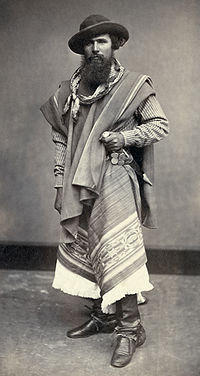
Llanero.
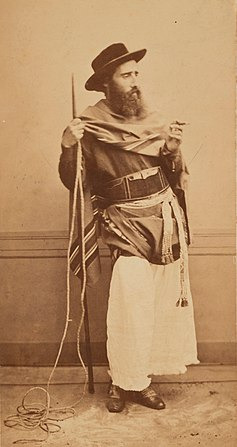
Morochuco.
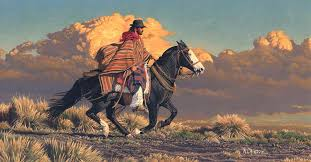
Como mínimo me gustaría que les den un poncho para diferenciarlos de las unidades norteamericanas. ![]()
I don’t know if this will convince everyone, but I would like the Latin American revolutions to have some changes.

Promotions for revolutionary units?
Revolutionary/Peruvian Guard
Valor Promotion : Extra hit points and faster attack speed.
Ironclads
Defence Promotion: Extra hit points.
Gatling Guns
Agility Promotion: Extra movement speed.
Gaucho/Jagunços
Combat Promotion: Extra hit points and extra attack.
Llanero
Defence Promotion : Extra hit points.
Cuerudo/Morochuco
Combat Promotion: Extra hit points and extra attack.
Mounted Granadero
Combat Promotion: Extra hit points and extra attack.
Independence Dragoons
Skill Promotion: Extra range and faster attack speed.
Hussars of Death
Defence Promotion: Extra hit points.
New Cards?
Argentina
Argentinian barbecue: Livestock Pens can now train cows and automatically gathers up to 3 fattened livestock in a radius of 15 at the gathering speed of 3.0/s; Cows fatten 30%
Estancieros: Gauchos can gather from Animals, Mills, Plantations and Haciendas.
Brasil
2 Gold Prospector Wagon: Ships 2 Gold Prospector Wagon. (Inf)
São Paulo: Now Town Centers automatically spawn 10 Voluntarios da Patria every 60 seconds.
Chile
Chañarcillo Outcrop: 5 silver Prospector Wagon. (Inf)
Silver Rush: Citizens collect from silver mines 500% faster.
Gran Colombia
Albion mercenaries camps: Upgrades Taverns into Mercenary Camps that get cost -50%, build time -30%, build bounty and hit points -40%, auto gather coin -50%, build limit +5, and offer a fixed assortment of Albion mercenaries: Highlanders, Jaegers, and Harquebusiers.
Improved Mercenaries of Albion: Highlanders, Jaegers, and Harquebusiers gain 50% more attack and hit points.
Perú
Peruvian Fortresses: Fortresses can now produce Revolutionaries/Peruvian Guards, Morochucos, and Huaracas.
The Liberating Army: Forts spawn units in batches instead of training them.
Obviously the developers are never going to use this idea, but I hope that at least they see that there is genuine interest in improving revs. ![]()
I don’t know if the developers will have time, but I would like to ask them to complete the patagonia, part of Santa Cruz is missing and all of Tierra del Fuego is missing.
I think that if they complete this area it could be divided into 2 maps, North Patagonia and South Patagonia.
Northern Patagonia could maintain the current style and the southern part could be a much more snowy and mountainous version.
Tierra del Fuego.
Tierra del Fuego en invierno.
Question for everyone, what part of the map do you think should be divided? in my opinion Patagonia and Araucania.
Out of all the people in global history… Carlos Lambert?
All those card are super vague allusions to the history of the countries, although to be fair the revolutionary units for each civ are already super random as they are.
(Am almost sure the only reason Husar de la Muerte is an unit at all is because it has a wiki page and it does have one only because of that very old movie.)
Araucania should definitely be split. Probably needs an Atacama map there, Matorral probs would be overkill, Argentina has more potential for interesting maps in it. Aysen map would be cute though, maybe having Tierra del Fuego as well.
Patagonia > Patagonia, Tierra del Fuego and Malvinas/Falklands
Amazonia > Amazonia and Grão-Para
En mi defensa, quise centrar mas en reforzar las estrategias de las revoluciones, pero estoy dispuesto a escuchar cualquier sugerencia que quiera proponer. ![]()
Con respecto al Husar de la Muerte, quiero pensar que a los desarrolladores no encontraron mas unidades para chile porque es mas difícil sin un conocimiento previo.
Ojala algún día todos los mapas se dividan en zonas mas pequeñas con diferente flora y fauna. (incluso podrían agregar un sistema de día y noche o de estaciones)
PD: Obviamente con limitaciones, no quiero dar a entender que el desierto patagónico debería poder convertirse en un bosque exuberante o tener alces y elefantes, para eso tenemos el extraordinario mapa de desconocido. ![]()
Me parece una buena idea, pero dudo que los desarrolladores agreguen las islas Malvinas, en especial porque son un tema muy controversial, aunque no es imposible que las agreguen como un mapa de nombre genérico.
Por ejemplo, Islas del sur, islas de Sudamérica o Islas de la Patagonia.
Yes, although in defense of them, the civil war is somewhat controversial, although Antientam and Gettysburg would not be bad as historical battles… although later in the imperial age of the United States they make allusions and references to the civil war…
Lo suyo sería meter también algunas batallas en América del siglo XVI y XVII (1500-1700) y principios del siglo XVIII (1700-1754)…en Europa con los mapas históricos ya está todo más o menos cubierto desde las Guerras Italianas (1494-1559) hasta la Guerra de Crimea (1853-1856):
-
Las Guerras Italianas (1494-1559)
-
La Guerra de los 80 años (1568-1648)
-
La Guerra de los 30 años (1618-1648) (solo multijugador) (Lion from the North intensifies)
-
El Diluvio Polaco (1655-1660)
-
La Gran Guerra Turca (1683-1699) (haciendo hincapié en la Batalla de Kahlenberg de 1683) (Winged Hussars intensifies)
-
La Gran Guerra del Norte (1700-1721) (Carolux Rex intensifies)
-
Las Guerras Napoleónicas (1803-1815)
-
Las Guerras Ruso-Turcas (1853-1856) (haciendo hincapié en la Guerra de Crimea)
Patagonia in four maps:Patagonia,Tierra del Fuego,South Atlantic Isles (or Malvinas in the Spanish-Portuguese traductions and Falklands in the English traduction) and Antarctic Territories;and Araucania in three maps:Atacama Desert (it would be like Painted Desert or Dunes maps),Maule (it would be one map with a river in the middle and Inca in the north side and Mapuche in the south side) and Araucania (like it is now)…
Which of the 2?? xd…![]()
